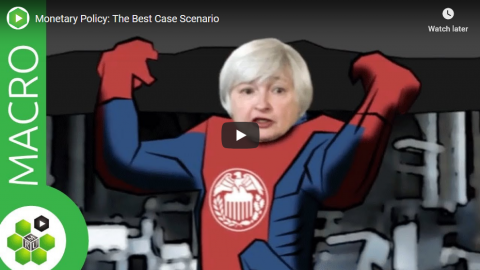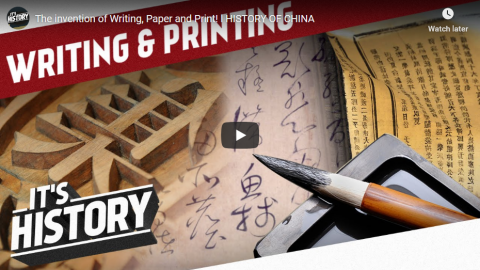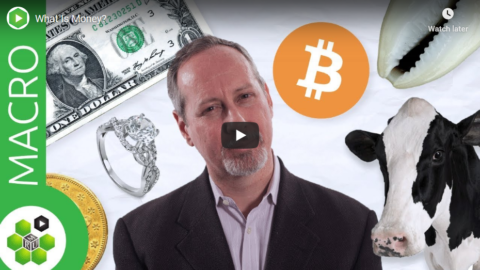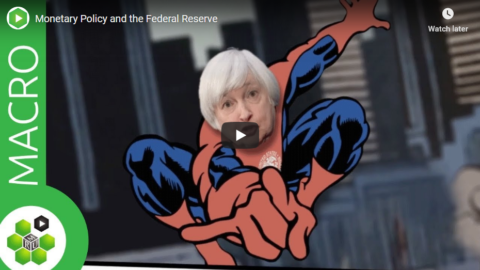One of David Ricardo’s foundational assertions was the law of one price. That tradeable goods will cost the same, when their transport costs are included, in different places. The insight being that if they weren’t then people would buy in one, sell in the other, thereby equalising prices. A reasonable corollary to this idea is that exchange rates should move based upon purchasing parity or interest rate parity. The second is because people can move their money, just like anything else, to arbitrage between prices – here, the interest rate. The other because, well, that’s what arbitrage will do, equalise those PPP exchange rates. Not wholly, not perfectly, but roughly enough.
Tim Worstall, “Ricardo Still Right 201 Years Later”, Continental Telegraph, 2018-11-01.
April 18, 2021
QotD: Two centuries on, Ricardo still right
July 20, 2020
QotD: Protectionists misunderstand the role of money
A Protectionist is Someone Who … thinks that the ultimate purpose of producing goods and services is to use them to acquire as much money as possible. Unlike a free-trader who understands that the purpose of producing goods and services is to acquire for yourself and your family as many as possible real goods and services to raise as much as possible your standard of living – and who understands that exchanging for money what you directly produce is merely a means of lowering your cost of acquiring in exchange as many as possible goods and services produced by others – the protectionist thinks that the ultimate purpose of producing real goods and services is to use them to acquire as much money as possible.
The Econ 101 teacher typically draws on the white board a diagram of two countries trading with each other. Country A is shown exporting (say) steel to country B in exchange for dollars, and then using those dollars to buy lumber from country B. The Econ 101 teacher informs his or her class that, while these exchanges are mediated by dollars, what ultimately is going on in this diagram is that the people of country A produce steel and send some of that steel to the people of country B because the people of country A want lumber from country B. Likewise, the people of country B produce lumber and send some of it to the people of country A because the people of country B want steel from country A. “The money that you see, class,” explains the Econ 101 teacher, “merely facilitates the exchange of steel for lumber. What’s important here is the getting of steel and of lumber. Money is a tool used by the people of country A to transform some of the steel they produce into lumber that they want to consume. Likewise, money is a tool used by the people of country B to transform some of the lumber they produce into steel that they want to consume.”
The protectionist thinks of this hypothetical two-country exchange entirely differently from the way that the Econ 101 teacher thinks of it. For the protectionist, the people of country A produce steel as a means of getting money; that is the ultimate goal. And the people of country B produce lumber as a means of getting money; that – the getting of money – is the ultimate goal. While for the Econ 101 teacher the two-country diagram that he or she draws is meant to show how money facilitates the ultimate acquisition by the peoples of each country of real goods, for the protectionist the diagram seems to show that the production of real goods is a means of facilitating the ultimate acquisition by the peoples of each country of money.
Don Boudreaux, “A Protectionist is Someone Who…”, Café Hayek, 2018-04-10.
April 14, 2020
QotD: The Edict of Diocletian, 301 AD
The most famous episode of price controls in Roman history was during the reign of Emperor Diocletian (A.D. 244-312). He assumed the throne in Rome in A.D. 284. Almost immediately, Diocletian began to undertake huge and financially expensive government spending projects.
There was a massive increase in the armed forces and military spending; a huge building project was started in the form of a planned new capital for the Roman Empire in Asia Minor (present-day Turkey) at the city of Nicomedia; he greatly expanded the Roman bureaucracy; and he instituted forced labor for completion of his public works projects.
[…]
Diocletian also instituted a tax-in-kind; that is, the Roman government would not accept its own worthless, debased money as payment for taxes owed. Since the Roman taxpayers had to meet their tax bills in actual goods, this immobilized the entire population. Many were now bound to the land or a given occupation, so as to assure that they had produced the products that the government demanded as due it at tax collection time. An increasingly rigid economic structure, therefore, was imposed on the whole Roman economy.
But the worst was still to come. In A.D. 301, the famous Edict of Diocletian was passed. The Emperor fixed the prices of grain, beef, eggs, clothing, and other articles sold on the market. He also fixed the wages of those employed in the production of these goods. The penalty imposed for violation of these price and wage controls, that is, for any one caught selling any of these goods at higher than prescribed prices and wages, was death.
Realizing that once these controls were announced, many farmers and manufacturers would lose all incentive to bring their commodities to market at prices set far below what the traders would consider fair market values, Diocletian also prescribed in the Edict that all those who were found to be “hoarding” goods off the market would be severely punished; their goods would be confiscated and they would be put to death.
In the Greek parts of the Roman Empire, archeologists have found the price tables listing the government-mandated prices. They list over 1,000 individual prices and wages set by the law and what the permitted price and wage was to be for each of the commodities, goods, and labor services.
A Roman of this period named Lactanius wrote during this time that Diocletian “… then set himself to regulate the prices of all vendible things. There was much blood shed upon very slight and trifling accounts; and the people brought no more provisions to market, since they could not get a reasonable price for them and this increased the dearth [the scarcity] so much, that at last after many had died by it, the law was set aside.”
Richard M. Ebeling, “How Roman Central Planners Destroyed Their Economy”, Foundation for Economic Education, 2016-10-05.
April 4, 2020
Monetary Policy: The Negative Real Shock Dilemma
Marginal Revolution University
Published 15 Aug 2017Imagine a negative real shock, like an oil crisis, just hit the economy. How should the Fed respond?
Decreasing the money supply will help with inflation, but make growth worse. Increasing the money supply will improve growth, but inflation will climb higher. What’s the Fed to do?!
March 12, 2020
QotD: Cryptocurrency versus cash in a modern economy
The new TV series Ozark has the best explanation of this I’ve seen in popular culture. To paraphrase: Say you have $1 million in cash. What can you actually do with it?
If you try to deposit it in the bank, they will file a report, and you will shortly be explaining to the government where that money came from. Unless you have a good explanation, you will then be desperately trying to hire a lawyer in order to avoid a trip to the pokey.
Nor can you simply buy a house or a car with that cash, which will raise many, many eyebrows at the bank, and then at the government that bank reports to. You basically can’t make any large purchase in cash without raising a lot of questions. This is why drug dealers spend so much effort figuring out how to launder their ill-gotten gains. Unless you can find some way to put the money in a bank without the government getting suspicious, then all you have, in the words of Jason Bateman’s character, is (approximately) “groceries and gas for the rest of your life.”
And that’s dollars, which are indisputably legal tender. Your cryptocurrency will be even harder to spend. Who wants to trade you legal cash for scrip that’s only good for buying on the black market? How do you find that person? What discount will they demand for giving up their cash?
Bitcoin is currently good for transferring money out of failing states like Venezuela, because in those places, the local currency is so worthless that you’re better off trading it for bitcoin, or for that matter, cans of mackerel. But that presumes there are countries elsewhere with stable governments and strong economies where bitcoins can be turned into real goods. If bitcoins become a good way to evade those governments, those governments will ban them, and desperate people will go back to smuggling diamonds and dollars.
Megan McArdle, “Bitcoin Is an Implausible Currency”, Bloomberg View, 2017-12-27.
February 29, 2020
The metallic nickname of Henry VIII
In the most recent Age of Invention newsletter, Anton Howes outlines the rocky investment history for German mining firms in England during the Tudor period:
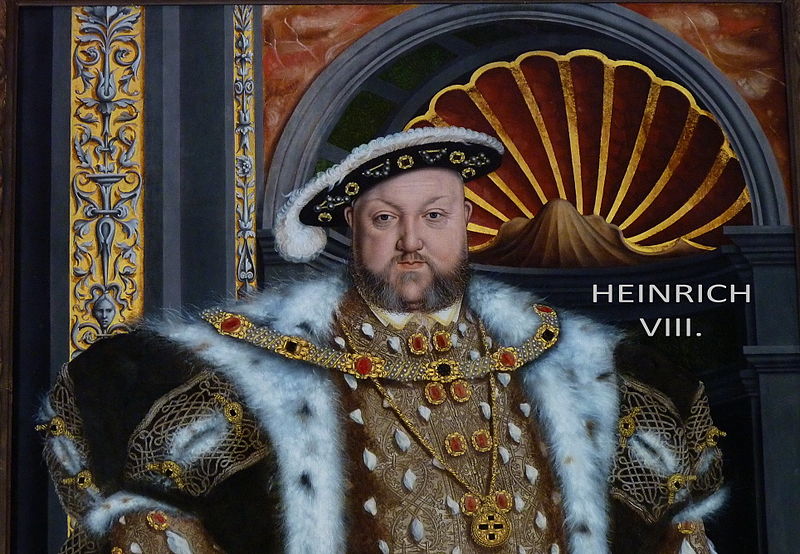
Cropped image of a Hans Holbein the Younger portrait of King Henry VIII at Petworth House.
Photo by Hans Bernhard via Wikimedia Commons.
It’s an especially interesting case of England’s technological backwardness, given that copper was a material of major strategic importance: a necessary ingredient for the casting of bronze cannon. And it was useful for other industries, especially when mixed with zinc to form brass. Brass was the material of choice for accurate navigational instruments, as well as for ordinary pots and kettles. Most importantly, brass wire was needed for wool cards, used to straighten the fibres ready for spinning into thread. A cheaper and more secure supply of copper might thus potentially make England’s principal export, woollen cloth, even more competitive — if only the English could also work out how to produce brass.
The opportunity to introduce a copper industry appeared in 1560, when German bankers became involved in restoring the gold and silver content of England’s currency. The expensive wars of Henry VIII and Edward VI in the 1540s had prompted debasements of the coinage, to the short-term benefit of the crown, but to the long-term cost of both crown and country. By the end of Henry VIII’s reign, the ostensibly silver coins were actually mostly made of copper (as the coins were used, Henry’s nose on the faces of the coins wore down, revealing the base metal underneath and earning him the nickname Old Coppernose). The debased money continued to circulate for over a decade, driving the good money out of circulation. People preferred to hoard the higher-value currency, to send it abroad to pay for imports, or even to melt it down for the bullion. The weakness of the pound was an especial problem for Thomas Gresham, Queen Elizabeth’s financier, in that government loans from bankers in London and Antwerp had to be repaid in currency that was assessed for its gold and silver content, rather than its face value. Ever short of cash, the government was constantly resorting to such loans, made more expensive by the lack of bullion.
Restoring the currency — calling in the debased coins, melting them down, and then re-minting them at a higher fineness — required expertise that the English did not have. From France, the mint hired Eloy Mestrelle to strike the new coins by machine rather than by hand. (He was likely available because the French authorities suspected him of counterfeiting — the first mention of him in English records is a pardon for forgery, a habit that apparently died hard as he was eventually hanged for the offence). And to do the refining, Gresham hired German metallurgists: Johannes Loner and Daniel Ulstätt got the job, taking payment in the form of the copper they extracted from the debased coinage (along with a little of the silver). It turned out to be a dangerous assignment: some of the copper may have been mixed with arsenic, which was released in fumes during the refining process, thus poisoning the workers. They were prescribed milk, to be drunk from human skulls, for which the government even gave permission to use the traitors’ heads that were displayed on spikes on London Bridge — but to little avail, unfortunately, as some of them still died.
Loner and Ulstätt’s payment in copper appears to be no accident. They were agents of the Augsburg banking firm of Haug, Langnauer and Company, who controlled the major copper mines in Tirol. Having obtained the English government as a client, they now proposed the creation of English copper mines. They saw a chance to use England as a source of cheap copper, with which they could supply the German brass industry. It turns out that the tale of the multinational firm seeking to take advantage of a developing country for its raw materials is an extremely old one: in the 1560s, the developing country was England.
Yet the investment did not quite go according to plan. Although the Germans possessed all of the metallurgical expertise, the English insisted that the endeavour be organised on their own terms: the Company of Mines Royal. Only a third of the company’s twenty-four shares were to be held by the Germans, with the rest purchased by England’s political and mercantile elite: people like William Cecil (the Secretary of State) and the Earl of Leicester, Robert Dudley (the Queen’s crush). It was an attractive investment, protected from competition by a patent monopoly for mines of gold, silver, copper, and mercury in many of the relevant counties, as well as a life-time exemption for the investors from all taxes raised by parliament (in those days, parliament was pretty much only assembled to legitimise the raising of new taxes).
January 11, 2020
The bubbly 1720s
In the latest Age of Invention newsletter, Anton Howes looks at Britain’s volatile financial scene in the 1720s:
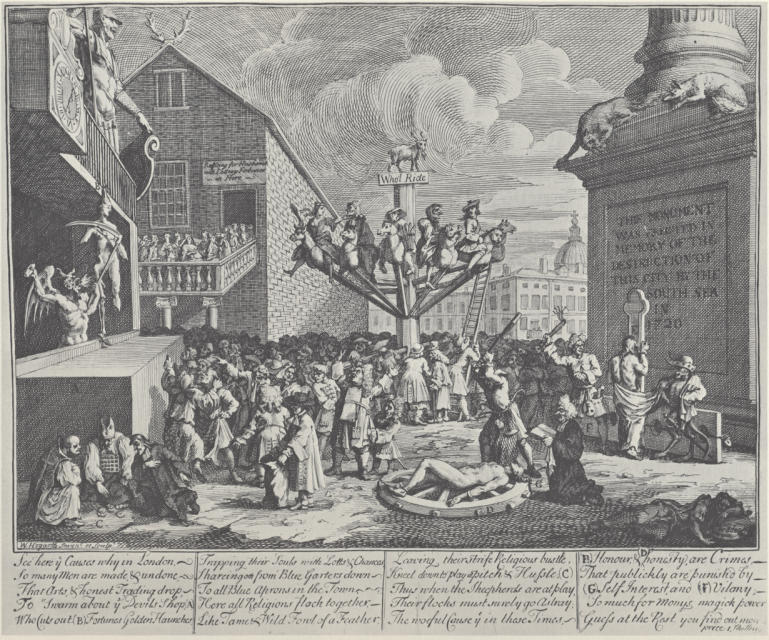
William Hogarth – The South Sea Scheme, 1721. In the bottom left corner are Protestant, Catholic, and Jewish figures gambling, while in the middle there is a huge machine, like a merry-go-round, which people are boarding. At the top is a goat, written below which is “Who’l Ride”. The people are scattered around the picture with a sense of disorder, while the progress of the well-dressed people towards the ride in the middle represents the foolishness of the crowd in buying stock in the South Sea Company, which spent more time issuing stock than anything else.
Scanned from The genius of William Hogarth or Hogarth’s Graphical Works via Wikimedia Commons.
Over in France, a Scottish banker named John Law had in the late 1710s overseen an ambitious scheme to reorganise the government’s finances. He ran the Mississippi Company, one of the many companies with monopolies on France’s international trade. His scheme was for the company to acquire all of the other similar monopolies, so that it could have a monopoly on all of the country’s intercontinental trade routes. By 1719, the Mississippi Company had swelled into a Company of the Indies, which in turn had purchased the right to collect French taxes, from which it took took its own cut. In exchange for acquiring these monopolies, Law’s new super-monopoly would buy up the French government’s accumulated war debts, allowing repayment on more generous terms. By allowing the state to borrow more cheaply, the scheme was to be a key plank in improving French military might.
Meanwhile, in Britain, a very similar project was afoot. Following the War of the Spanish Succession, one of the things Britain won from France was the asiento – the monopoly on supplying African slaves to Spain’s colonies in America. The asiento was given to the South Sea Company, which had the monopoly on British trade with South America, and which in 1720 began to follow a scheme similar to Law’s. Given developments in France, it would not do for the British state to be left behind in terms of its capacity to take on more debt for war. Thus, with political support, the South Sea Company began to buy up the government’s debt, persuading its creditors to exchange that debt for increasingly valuable company shares.
In 1720, both schemes came crashing down. In the case of Law’s scheme, he had printed paper currency with which people could buy his company’s shares, but in 1720 discovered he had printed too much. When he prudently tried to devalue the company’s shares to match the quantity of paper notes, the devaluation spun out of control. In the case of the South Sea Company, the causes of the crash were a little more mysterious, perhaps even verging on the mundane. One explanation is that too many wealthy investors simply tried to sell their shares so that they would have ready cash to spend on holidaying in Europe, precipitating a minor fall in the share price which then led to a more widespread panic. Regardless, it did not end well. The company itself continued for many years thereafter — it even got involved with whaling off the coast of Greenland — but the collapse of its share price ended its chance to restructure the government’s debts.
November 27, 2019
QotD: The evolution of markets
It is a settled assumption among most libertarians, classical liberals and English-speaking conservatives that market behaviour is part of human nature. Whether or not we care to make a point of it, we stand with John Locke and, through him, with the men of the Middle Ages and with the Greeks and Romans, in trying to derive what is right from what is natural.
We believe that there is a natural inclination to promote our own welfare and that of our loved ones. We further believe that, given reasonable security of life and property, this inclination will lead to the emergence of a system of voluntary exchange. That is, we will seek to trade the things we have or can create for other things that we regard as of greater value to ourselves.
In doing so, ratios of exchange that we call prices will be revealed. These prices, in turn, will provide general information about what should be produced, in what ways and in what quantities. Furthermore, changes in price will provide information about changes in preferences or in abilities to produce. Custom will set aside one or more goods to serve as money. Institutions will emerge that channel savings into productive investment, that spread risk, and that moderate expected fluctuations in price. Laws will develop to police the transfer of property and performance of contracts.
We believe that market economies emerge spontaneously and are self-regulating and self-sustaining. This is not to say that all market societies will be the same. Their exact shape will depend on the intellectual and moral qualities of the individuals who comprise them. They will reflect pre-existing patterns of trust and honesty and the general cultural and religious values of a people. They will also be more or less distorted by government intervention. But we do say that market behaviour is natural — that, in the absence of extreme government coercion, or extreme disorder, buying and selling to increase our own welfare is what we naturally do.
Sean Gabb, “Market Behaviour in the Ancient World: An Overview of the Debate”, 2008-05.
November 3, 2019
QotD: The theocratic Anabaptist State of Münster
A crucial part of the Anabaptist reign of terror was their decision, again prefiguring that of the Khmer Rouge regime in Cambodia, to abolish all private ownership of money. With no money to purchase any good, the population became slavishly dependent on handouts or rations from the power elite. Accordingly, Matthys, Rothmann, and the rest launched a propaganda campaign that it was un-Christian to own money privately; and that all money should be held “in common,” which in practice meant that all money whatsoever must be handed over to Matthys and his ruling clique…
After two months of unremitting propaganda, combined with threats and terror against those who disobeyed, the private ownership of money was effectively abolished in Münster. The government seized all the money and used it to buy goods or hire workers from the outside world. Wages were doled out in kind by the only employer: the theocratic Anabaptist State.
Food was confiscated from private homes, and rationed according to the will of government deacons. Also, to accommodate the host of immigrants, all private homes were effectively communized, with everyone permitted to quarter themselves everywhere; it was now illegal to close, let alone lock, one’s doors. Compulsory communal dining halls were established, where people ate together to the readings from the Old Testament.
The compulsory communism and reign of terror was carried out in the name of community and Christian “love.” This communization was considered the first giant step toward egalitarian communism, where, as Rothmann put it, “all things were to be in common, there was to be no private property and nobody was to do any more work, but simply trust in God.” Somehow, the workless part never seemed to arrive.
[…]
Totalitarianism in Münster was now complete. Death was now the punishment for virtually every independent act. Capital punishment was decreed for the high crimes of murder, theft, lying, avarice, and quarrelling. Death was also decreed for every conceivable kind of insubordination: the young against the parents, wives against their husbands, and, of course, anyone at all against the chosen representative of God on earth, the government of Münster. Bernt Knipperdollinck was appointed high executioner to enforce the decrees.
The only aspect of life previously left untouched was sex, and this deficiency was now made up. The only sexual relation now permitted by the Bockelson regime was marriage between two Anabaptists. Sex in any other form, including marriage with one of the “godless,” was a capital crime.
But soon Bockelson went beyond this rather old-fashioned credo, and decided to enforce compulsory polygamy in Münster. Since many of the expellees had left their wives and daughters behind, Münster now had three times as many marriageable women as men, so that polygamy had become technically feasible. Bockelson convinced the other, rather startled preachers by citing polygamy among the patriarchs of Israel, reinforcing this method of persuasion by threatening any dissenters with death.
Compulsory polygamy was a bit much for many of the Münsterites, who launched a rebellion in protest. The rebellion, however, was quickly crushed and most of the rebels put to death […]
The rest of the male population also began to take enthusiastically to the new decree. Many of the women reacted differently, however, and so the Elders passed a law ordering compulsory marriage for every woman under (and presumably also over) a certain age, which usually meant becoming a compulsory third or fourth wife.
Since marriage among the godless was not only invalid but also illegal, the wives of the expellees became fair game, and they were forced to “marry” good Anabaptists. Refusal of the women to comply with the new law was punishable, of course, with death, and a number of women were actually executed as a result.
Murray N. Rothbard, “Karl Marx as Religious Eschatologist”, Mises Institute, 2009-10-09.
October 24, 2019
Monetary Policy: The Best Case Scenario
Marginal Revolution University
Published on 8 Aug 2017Imagine that you’re the Fed and the economy’s been doing fine. GDP growth is good, inflation is low. But then something happens. Consumer confidence drops. The economy shrinks.
What do you do?
October 5, 2019
Legends Summarized: El Dorado
Overly Sarcastic Productions
Published 4 Oct 2019El Dorado! A shining golden city packed with promises of wealth, power and everlasting glory. An unspoiled paradise deep in the jungle, the PERFECT destination for treasure-hunters and anthropologists alike. Something that perfect is something EVERYONE wants to be real.
Aaaaand that’s the trick, isn’t it? Wanting something that badly isn’t healthy. Just ask the conquistadors!
(Oh wait, we can’t – because so many of them died on fruitless quests for El Dorado. And also it’s been five hundred years and they’d all be dead anyway)PATREON: https://www.Patreon.com/OSP
MERCH LINKS: https://www.redbubble.com/people/OSPY…
OUR WEBSITE: https://www.OverlySarcasticProductions.com
Find us on Twitter https://www.Twitter.com/OSPYouTube
Find us on Reddit https://www.Reddit.com/r/OSP/
September 18, 2019
The invention of Writing, Paper and Print! l HISTORY OF CHINA
IT’S HISTORY
Published on 22 Jul 2015The invention of script, paper and printing can be credited to the Chinese. It was in China that Cai Lun, in his emperor’s service, made the production of paper suitable for the masses. Originally planned as a means to wrap things in, it soon became obvious that paper was more suitable for writing than the common bamboo stick. Guy explains how the Chinese printed written pages long before Gutenberg was born, how Chinese writing actually works and how emperor Qin tried to establish the standardized Chinese Han Characters, or Hanzi, attempting to unify the writing symbols for his country.
» SOURCES
Videos: British Pathé (https://www.youtube.com/user/britishp…)
Pictures: mainly Picture Alliance
Content:
Faulmann, Carl (1995): Schriftzeichen und Alphabete aller Zeiten und Völker. Augsburg. Reprint der Originalausabe von 1880 Wien.
Pan, Jixing (1998): “On the origin of movable metal-types”. In: Chinese Science Bulletin 43 (20).
Wai Wong (2005): “Typesetting Chinese. A personal perspective”. In: TUGboat 26 (2) 111-114.
https://www.tug.org/TUGboat/tb26-2/wo…
Yan, Yangtse (2006): “New Evidence suggests longer paper making history in China”. http://news.xinhuanet.com/english/200…» ABOUT US
IT’S HISTORY is a ride through history – Join us discovering the world’s most important eras in IN TIME, BIOGRAPHIES of the GREATEST MINDS and the most important INVENTIONS.» HOW CAN I SUPPORT YOUR CHANNEL?
You can support us by sharing our videos with your friends and spreading the word about our work.» CAN I EMBED YOUR VIDEOS ON MY WEBSITE?
Of course, you can embed our videos on your website. We are happy if you show our channel to your friends, fellow students, classmates, professors, teachers or neighbors. Or just share our videos on Facebook, Twitter, Reddit etc. Subscribe to our channel and like our videos with a thumbs up.» CAN I SHOW YOUR VIDEOS IN CLASS?
Of course! Tell your teachers or professors about our channel and our videos. We’re happy if we can contribute with our videos.» CREDITS
Presented by: Guy Kiddey
Script by: Martin Haldenmair
Translated by: Guy Kiddey
Directed by: Daniel Czepelczauer
Director of Photography: Markus Kretzschmar
Music: Markus Kretzschmar
Sound Design: Bojan Novic
Editing: Markus KretzschmarA Mediakraft Networks original channel
Based on a concept by Florian Wittig and Daniel Czepelczauer
Executive Producers: Astrid Deinhard-Olsson, Spartacus Olsson
Head of Production: Michael Wendt
Producer: Daniel Czepelczauer
Social Media Manager: Laura Pagan and Florian WittigContains material licensed from British Pathé
All rights reserved – © Mediakraft Networks GmbH, 2015
August 1, 2019
What Is Money?
Marginal Revolution University
Published on 18 Jul 2017That may seem like a really simple question, but it’s actually kind of complicated. Paper bills and coins, or currency, is obviously money. But it doesn’t end there.
Technically, “money” is anything that is a widely accepted means of payment. This has changed throughout history. Once upon a time, cattle could be considered money. Or cowry shells. Today, cryptocurrencies like Bitcoin are being added to the mix.
Given that there’s no set definition for what makes a commodity money, there are a few measurements for the U.S. money supplies. The first, MB (or “monetary base”) measures currency and reserve deposits. This is what the Fed has the most direct control over.
Our next stop will be fractional reserve banking and the money multiplier.
July 25, 2019
Monetary Policy and the Federal Reserve
Marginal Revolution University
Published on 11 Jul 2017Spider-Man fans likely recall Uncle Ben advising his nephew, Peter Parker, that “With great power, comes great responsibility.”
As it turns out, that sage wisdom is also pretty applicable to the U.S. Federal Reserve System (aka the Fed). The Fed Chairperson, currently Janet Yellen, may not shoot webs out of her wrists, but she and the organization she represents have some super powers over our money supply.
The Fed also has quite a few limitations – monetary policy can only do so much. We’ve previously covered the quantity theory of money and long- and short-run economic growth. If you think back to those videos, you’ll remember that an increase in the money supply (which, in the U.S., is controlled by the Fed) only affects growth in the short-run. Even then, it’s often not smooth sailing.
In this video, we’ll give you an introduction to the function of the Fed as well as some of the problems it faces, and raise the question, “What is money?”
May 24, 2019
Game of Theories: The Monetarists
Marginal Revolution University
Published on 14 Nov 2017Meet the monetarists! This business cycle theory emphasizes the effect of the money supply and the central bank on the economy. Formulated by Nobel Laureate Milton Friedman, it’s a “goldilocks” theory that argues for a steady rate of fairly low inflation to keep the economy on track.


